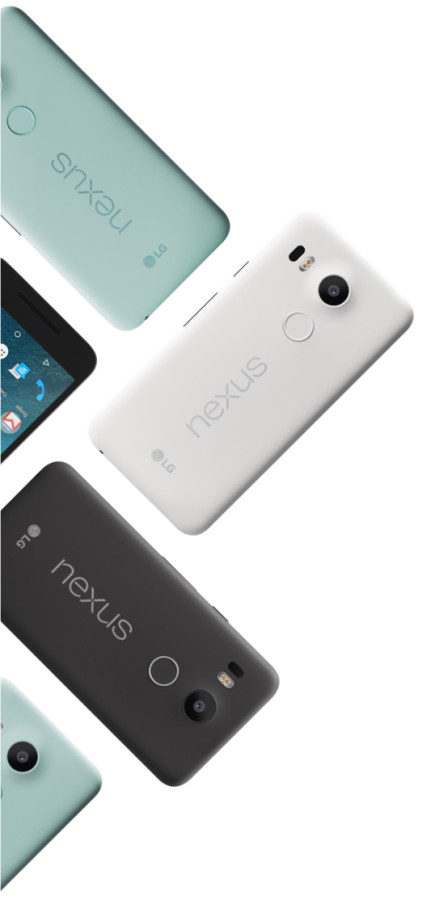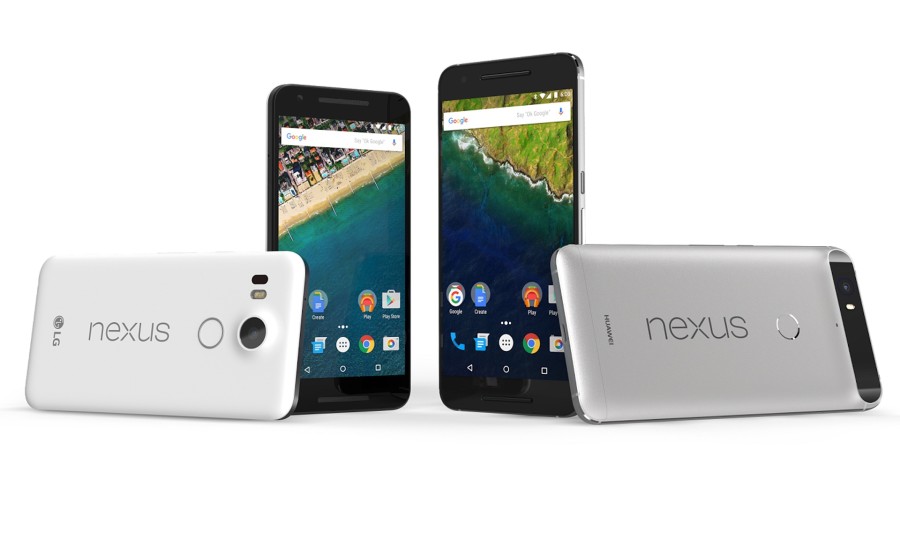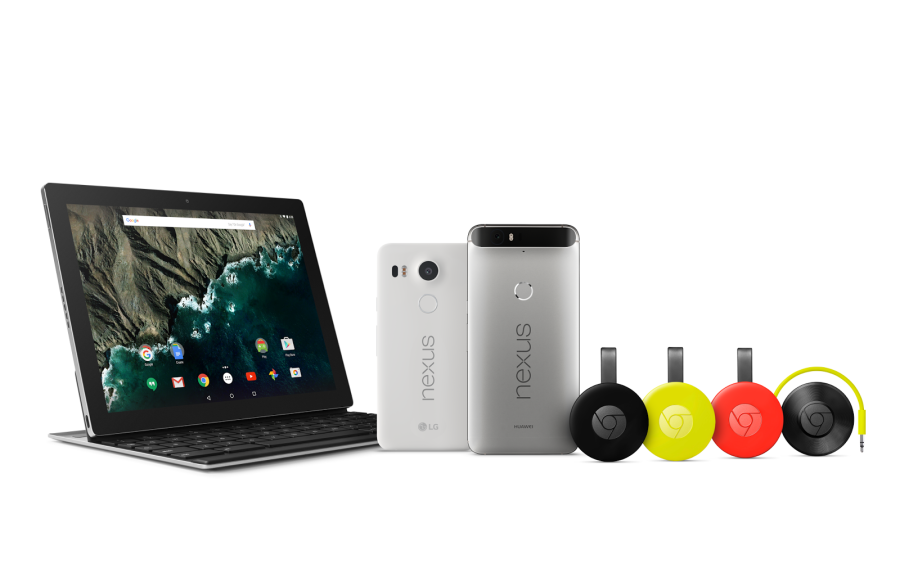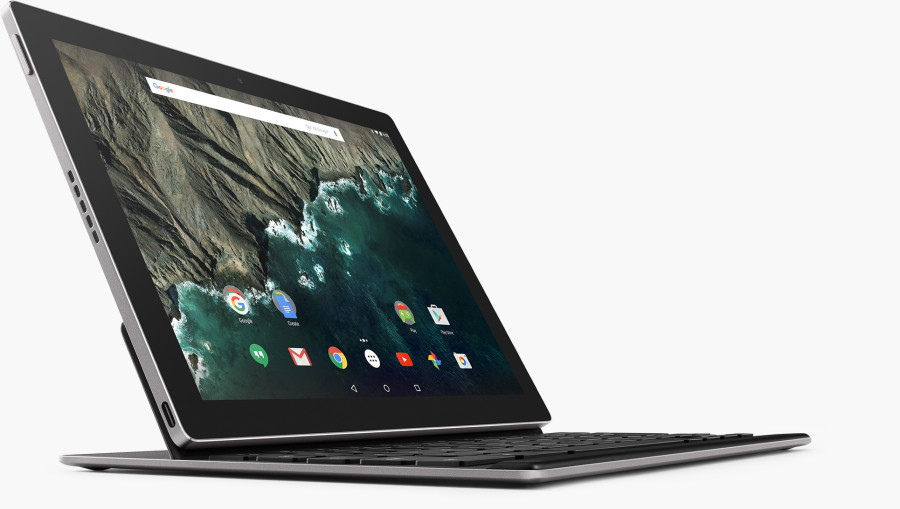Your donation will support the Student Publications Department at Mater Dei High School. Your contribution will allow us to keep our equipment up to date and cover our annual website hosting costs.
Google September 2015 Event
Mountain View's annual product refresh brings fresh and innovative devices in response to efforts from Cupertino and Redmond.
October 12, 2015
As with every fall, Google opened the curtains on their new cycle of products spanning their mobile Android division to TV peripherals for the consumer. Due to Google’s enormous ubiquity in our lives via web services, operating systems, and physical products, as well as their ties with Apple as competing technology behemoths, an overview is in order!
Nexus Products: 5X and 6P

Google unveiled two new phones, one to take the place of last year’s Motorola Nexus 6, and a spiritual successor of the LG Nexus 5, which was released the year prior. For the unfamiliar, the Google Nexus program is a design initiative where manufacturers can design their own flagship devices under the guidance of Google, to be sold with an untouched version of Google’s Android operating system. Previous devices include the HTC Nexus One, Samsung’s Nexus S and Galaxy Nexus, LG’s Nexus 4, and aforementioned Nexus 5 and 6. While this program does not boast a large percentage of the mobile market, it does set the precedent of quality, features, and innovation that Android manufacturers should strive for in their own flagships. Furthermore, Nexus devices are usually competitively priced and feature top-of-the-line specifications to provide a cheap and reliable option for app developers.
Huawei Nexus 6P
Google’s new larger phone marks a departure in both build quality standards and aesthetic ambitions that were arguably lacking from previous Nexus generations. The phone, which features a 5.7-inch screen, is manufactured out of aviation-grade aluminum and is measures a svelte 7.3-mm thin to match Apple’s newly released iPhone 6S Plus. The internals consist of the Snapdragon 810 processor, 3GB of RAM, and the aforementioned 5.7-inch screen with a resolution of 2560×1440 (the same resolution found on 27-inch iMacs and last year’s Nexus 6). The 6P and 5X have an additional motion co-processor, which allow for motion, activity, and gesture recognition without a heavy impact on battery life. Both phones also welcome the addition of a fingerprint scanner, branded Nexus Imprint, to compete with offerings of the likes of Apple and to establish a standard for Android manufacturers to follow suit.
One of the main improvements Google focused on was the camera, which historically has been a sore spot for Nexus devices. With the 6P and 5X, which share the same camera module, designers at Mountain View opted out of the megapixel race that so many Android manufacturers partake in. Rather, they settled for a 12.3MP camera with larger 1.55 μm-sized pixels for more detail and low light performance (comparable phones have pixel sizes around 1.1-1.3 μm). The 6P also boasts 4K video and 240FPS slow-motion video for the rear camera, and features an 8MP camera around the front for very, if not grotesquely, detailed selfies.
The last major improvement was the inclusion of a 3470 mAH battery (a nearly 20% increase in battery size vs. the Nexus 6) and a USB Type C connector in absence of the venerated Micro-USB Type B. Apple, with their new “MacBook” announcement in March, made waves in the technology industry when their latest ultraportable had only one USB Type C port, intended all of the functions that used to require a USB 3.0 and HDMI and Displayport – file transfer, charging, display mirroring. The new connector is reversible (like the Lightning Connector), and is slated to be the new industry standard, in which every connector will simply be phased out in favor of the USB Type C. While it is still relatively new, after more adoption the convenience of such a standard should prove extremely worthwhile (charge your phone with the same charger for your laptop and vice versa!).
The 6P will come in 3 colors: Aluminum, Frost, and Graphite, and will start at $499 for 32GB of storage and go up to $649 for 128GB of storage.

LG Nexus 5X
The smaller brother to the 6P is marketed as the compact and affordable alternative for those not willing to shell out as much for a phone, but still wanting a complete and competent package without compromises. The 5X is manufactured out of polycarbonate instead of the brushed aluminum of the 6P, and has less of a comparable design flourish. However, it comes in a lighter and more durable package that features a much more pocketable 5.2-inch display measuring in at 1080p resolution (1920×1080). Internals include a Snapdragon 808 processor and 2GB of RAM.
The camera remains the same as the one offered with the 6P (with the exception of 120FPS instead of 240 FPS slow motion video), as is the USB Type C cable, fingerprint scanner, and additional motion co-processor. The 5X comes with a 2700 mAH battery capacity (a sizeable improvement of the 2300 mAH found in the original Nexus 5), and comes in Carbon, Quartz, and Ice (a playful minty-blue color). It will retail for $379 for 16GB of storage and $429 for 32GB.
Both the Huawei Nexus 6P and LG Nexus 5X will ship with Android 6.0 Marshmallow, which boasts security, battery, and intuition improvements, as well as polishing system-wide.
Chromecast
Google’s dirt-cheap and effective solution to “turn dumb TVs into Smart TVs” was updated at the announcement, and was given a sibling dedicated for speakers. Both additions are priced at $35 to follow the preceding Chromecast.
The new Chromecast model now is a disk connected to a bendable HDMI cable, which resolves the problems of wall-mounted TVs left with no room to squeeze in the first-generation dongle. The Chromecast continues to improve on the streaming capabilities, with dozens of apps being able to cast being added daily. Chromecasts can already stream most major media providers such as Netflix, Hulu, Chrome Tabs from computers, as well as screens from Android devices and apps. Spotify integration was also announced, bringing in the fastest-growing music provider onto the ecosystem with the likes of Rdio, Pandora, and Google Play Music.
On the other hand, the new Chrome Audio device effectively turns a conventional speaker, with RCA, 3.5mm, or Optical Output, into an internet-connected device capable of streaming audio from any audio source or media outlets. Users can stream audio from their phones, computers, and apps such as aforementioned Spotify to their would-be derelict speakers.

Pixel C
To round out their announcement event, Google unveiled a new flagship tablet running Android. The Pixel C has a 10.2-inch screen (which will undoubtedly draw comparison to the recently announced iPad Pro as well as the well-known Microsoft Surface Pro) with a resolution of 2560×1800. Manufactured out of aluminum like the Nexus 6P, the Pixel C is marketed as a premium product geared towards productivity.
A high-end keyboard is offered; full-sized chiclet keys and an ingenious docking and charging solution that melds into the Pixel were highlighted during the event. The tablet is powered by a nVidia X1 processor with a desktop-grade Maxwell graphics processor, as well as 3GB of RAM. More details are to be announced, but Google assures that the Pixel C will be available in time for the holidays. Pricing starts at $499 for the 32GB model, and $599 for the 64GB model. The keyboard will be sold separately for $149.

